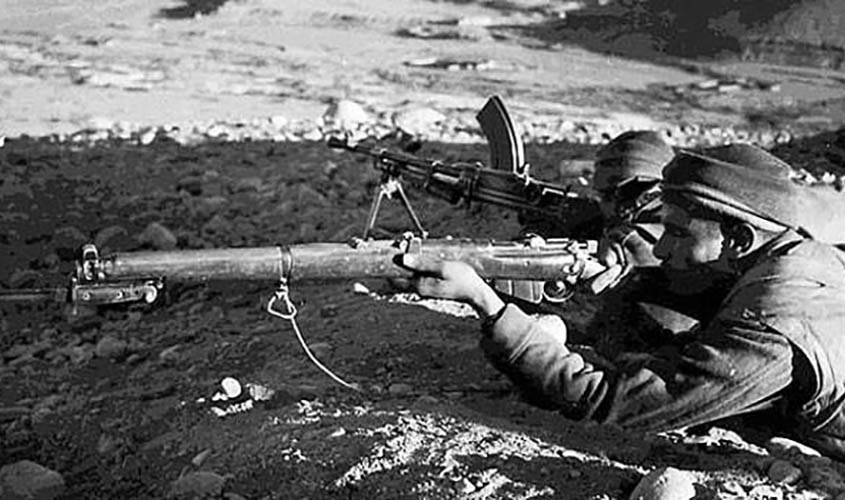 Riding a sagging but impressive economic prosperity and mesmerised by its own fantastic and exaggerated delusions of grandeur, China has come to exhibit a hubris that casts it as an overbearing neighbourhood bully and not as a responsible world leader. The increasingly raucous sabre rattling emanating from China over the Doklam border dispute is ample evidence of this boorish behaviour. However, if China is under the impression that India is going to roll over and play possum while China stomps all over it in its pursuit of world dominance, it is sadly mistaken.
Riding a sagging but impressive economic prosperity and mesmerised by its own fantastic and exaggerated delusions of grandeur, China has come to exhibit a hubris that casts it as an overbearing neighbourhood bully and not as a responsible world leader. The increasingly raucous sabre rattling emanating from China over the Doklam border dispute is ample evidence of this boorish behaviour. However, if China is under the impression that India is going to roll over and play possum while China stomps all over it in its pursuit of world dominance, it is sadly mistaken.
Repeated references to India’s humiliating military debacle of 1962 in the Chinese media, rightly prompted India’s Defence Minister to assert that the India of 2017 was vastly different from 1962.
China’s current military dominance is by no means unequivocally definitive. Despite China’s numerical advantage in terms of personnel and equipment, the disparity between the two nations is more semantic than decisive as opposed to the matchless comparison of 1962. Today India is a nuclear armed power with a modern army that is the fourth largest in the world; in short, India is not a pushover.
Moreover, numbers alone do not define capabilities. Combat preparedness factors in battle experience as well and in this India holds the edge. The Indian Army has engaged in two full-fledged wars and one limited conflict with Pakistan since 1962; in at least two of these three confrontations, the Indian Army scored decisive victories, with the 1971 war being a magnificent display of India’s overall military prowess.
Comparatively, China’s track record since 1962 has been disappointing. Barely four years after 1962, Indian forces inflicted a crushing defeat on the Chinese army and forced it to retreat at Nathu La and Cho La; over 400 Chinese died versus 80-100 Indian casualties. This was a clear reflection of the changing military equation; a fact that did not go unnoticed by China watchers.
M. Taylor Fravel, an associate professor at MIT refers to “the declining claim strength in China’s decision to initiate the use of force” against India after the Nathu La and Cho La clashes in his book, Strong Borders, Secure Nation (Princeton University Press, 2008).
More telling is the story of the 1979 Sino-Vietnam war. It was a military debacle of gargantuan proportions, both in terms of casualties as well as objectives. China not only failed to dislodge Vietnam from Cambodia, but suffered significant fatalities (as high as 60,000 according to some estimates).
The bogey of the 1962 defeat must be laid to rest with a finality that is unquestionable: Chinese invincibility is a tall tale that belongs to an era gone by.
India’s heightened sensitivity to the current dispute stems from the Doklam plateau being the gateway to the “Chicken’s Neck” or the Siliguri corridor: a narrow swath of territory barely 27 km wide that connects the rest of India with the Northeast. Geo-political developments since 1962 have reduced India’s vulnerability. For one, Sikkim, which lies to the north of this area, is now an integral part of India, providing additional security buffer. Second, the emergence of Bangladesh in 1971 means that India has a friendly neighbour to the south, as opposed to a hostile East Pakistan. A huge armed presence in this area makes a military takeover almost impossible.
Summing up, India is less vulnerable and stronger than 1962.
India need not be overtly nervous about China’s jingoistic sabre rattling. India must stand firm and the message to China must be clear: its days of trampling over a meek, acquiescent India are over.
China, with its desire to be a world superpower, has more to lose in this stand-off. In its bid to teach India a lesson, China may end up being taught a chapter or two. Even a minimal credible military deterrence from India will set back its global aspirations by decades. One would counsel pragmatism in this setting.
India has no desire to rival China or engage in a military conflict. On its part, China must demonstrate its goodwill by facilitating India’s entry into the NSG group and dumbing down its anti-India policy. Mutual cooperation rather than rivalry can yield great dividends for both.
Vivek Gumaste is a US based academic and political commentator.

